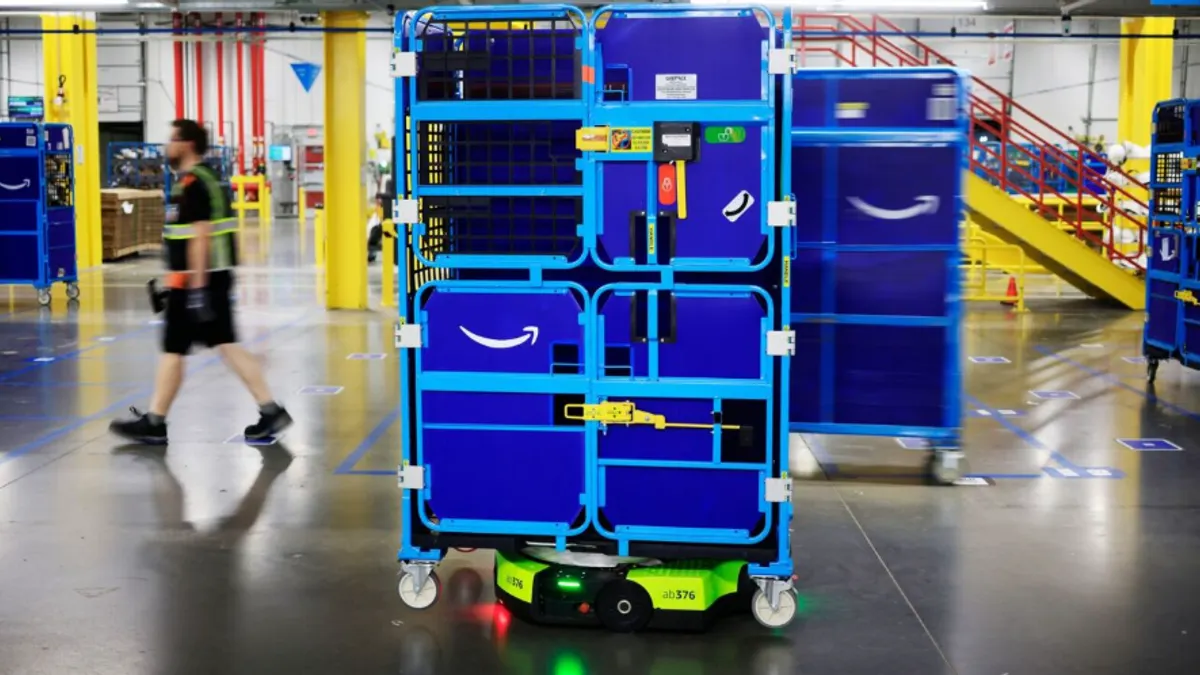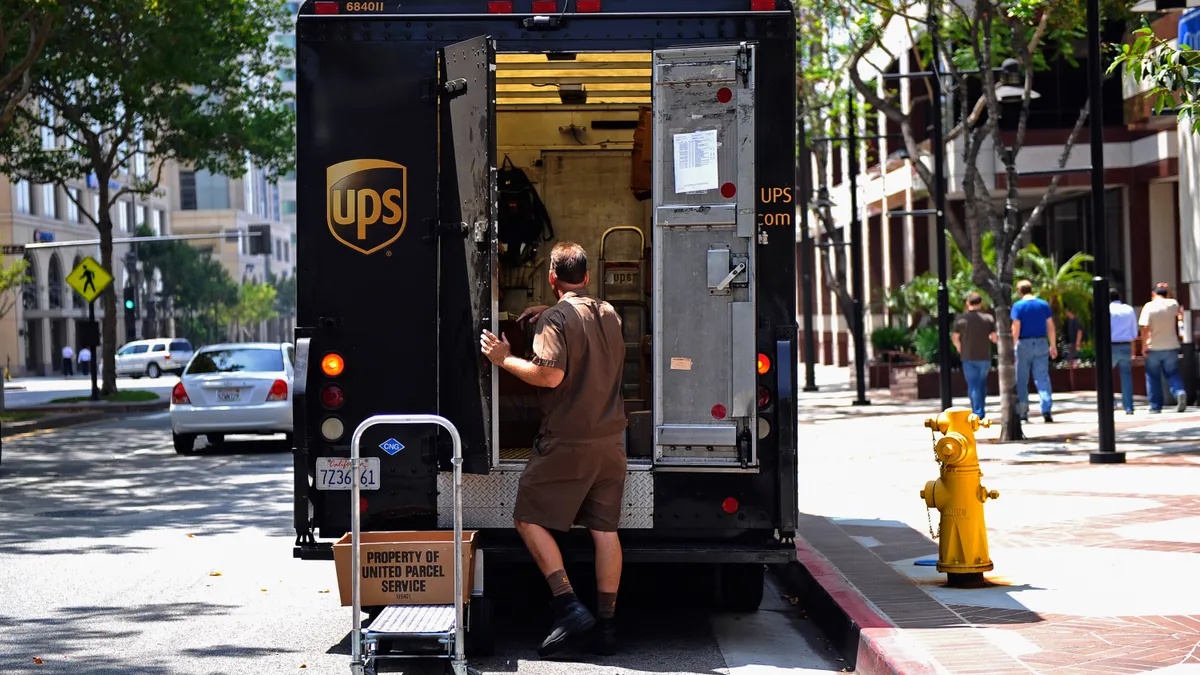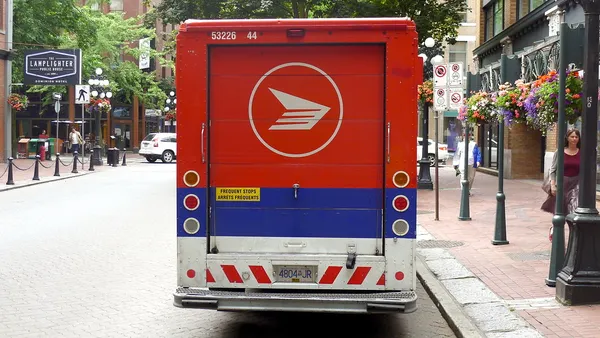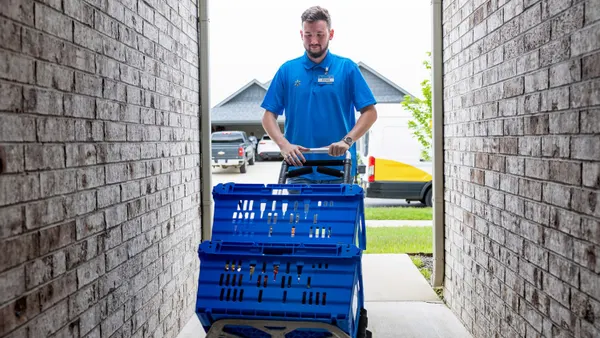Dive Brief:
- Amazon has improved its demand forecasting and delivery mapping capabilities through artificial intelligence, the company announced June 11.
- The upgrades aim to ensure inventory planning considers time-bound data like weather and help drivers more easily find the correct delivery location, according to Amazon. The company has also established an agentic AI team to build a framework for its warehouse robots to understand natural language commands.
- "While these systems work behind the scenes, customers will certainly experience their benefits: more accurate delivery locations, faster shipping options, and improved availability of the products they want, when they want them," Amazon said.
Dive Insight:
AI has become a key tool in Amazon's repertoire to accelerate its fulfillment and delivery processes. The company has aggressively pursued faster shipping speeds through the years as it aims to separate itself from retail rivals like Walmart and spur more customer orders.
To deliver fast, Amazon first needs to accurately forecast demand and position the right amount of inventory in the right location.
The company's previous forecasting systems used sales history to guide planning decisions, but its new foundational AI forecasting model — currently used in the U.S., Canada, Mexico and Brazil — leans additional data to strengthen accuracy. This includes factoring in regional differences, like demand for ski goggles in Boulder, Colorado, during the peak ski season.
"These forecasts have contributed to a 10% improvement in long-term national forecasts for deal events, and a 20% improvement in regional forecasts for millions of popular items," Amazon said.
When items are delivered, drivers are now tapping into Wellspring, Amazon's generative AI mapping technology. Wellspring identifies building entrances, parking spots and individual apartment complex units using resources like street and satellite imagery and customer instructions to ensure packages are dropped off at the correct location.
"When we started testing Wellspring in the U.S. in October 2024, the results were significant—the system mapped over 2.8 million apartment addresses to their corresponding buildings across more than 14,000 complexes, while also identifying convenient parking locations at 4 million addresses," Amazon said.
As for AI in Amazon's warehouse robots, the company is working to give them the ability to hear and understand natural language commands, allowing them to act autonomously based on those instructions.
For example, an operator could say to a robot, "Pick all the items in the yellow tote to your left and place them in the gray tote," and the robot would carry out that command, according to Amazon. The AI framework's development will make warehouse robots like Proteus more efficient and versatile, the company added.














